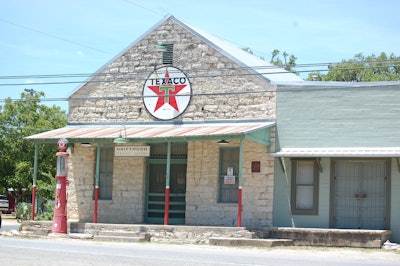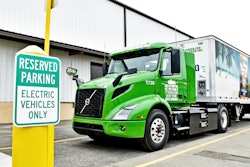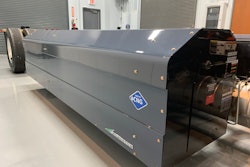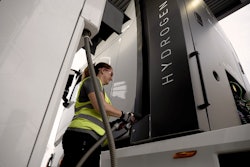
There are a few locations in the U.S. where you can experience gasoline range anxiety firsthand. I found one of them on Washington Route 504 passing through the little town of Toutle. This is the road into Mount St. Helens from Interstate 5. I’ve passed by this road for decades and never had the chance to try it until recently.
There is a lone gas station in Toutle. Across the street from it on the highway is an ominous blue road sign that simply says, “No Gas Ahead.” I was short on time, driving a rental car and not really sure how far I was going to get before the Johnston Ridge Observatory Park at the base of Mount St. Helens would close. Adding spice to the trip was the fact that this is also part of the world where internet is pretty iffy.
There were no cars heading east in my direction and just a few heading west back out toward civilization. I should have stopped for fuel, but how many times have people said that? I did some quick travel math, guessing at my fuel economy, factoring in the fact that I would be climbing some pretty steep terrain, but also would be mostly coasting back down, and figured I might just make it on what was left in my gas tank.
The drive to St. Helens is phenomenal, especially if you’ve been living in Texas for years. I stopped frequently to take photos and breathe in the fresh mountain air. The end of the road is 41 miles beyond the Toutle gas station. I began to question my decision when about 8 miles up the road from Toutle I passed an abandoned Shell gas station. After that, there were only a couple signs of civilization with the gaping snowcapped maw of the volcano on the horizon. After climbing for miles, the road dives down to the valley floor before reaching the Observatory. On the return trip I was sweating as I climbed back out of the valley before reaching a point where most of the road was again downhill back into Toutle.
The experience got me thinking about range anxiety, and particularly the “No Gas Ahead” sign seemed somewhat prescient for society. If the future is to be a zero-emissions one, gas stations will become rarer over time and drivers of gasoline vehicles will start experiencing range anxiety more frequently.
Back in Texas, I passed a relic of the early days of gasoline cars. The tiny crossroad town of Driftwood sports an old Texaco gas station. Turns out the Texas DOT has written a great history of gas stations in Texas titled A Field Guide to Gas Stations in Texas by W. Dwayne Jones. Driftwood’s Texaco station is what Jones refers to as a drive-up (or curbside) station – one of the earliest deployments circa 1910 to 1920. This guide is an excellent read to understand how we transitioned from horse-drawn wagons to a gas station on nearly every block, and now to the new mega stations.
Electric charging stations and hydrogen fueling stations are starting from essentially no installations, just as gasoline stations did back in 1910. The gasoline fueling network evolved as demand grew. Innovative businesses experimented with the infrastructure as it expanded. Not all the experiments worked. It was trial and error. There were stranded assets.
Those that now want an instantaneous fueling network for electric and hydrogen vehicles need to realize that how we use vehicles also evolved as the infrastructure was evolving. There were few paved roads in 1910, but by 1970 the nation had a massive interstate highway system and a local road network. The 1908 Ford Model T’s 20 hp engine had an amazing top speed of 45 mph and an enviable 25 to 30 mpg fuel economy with a range of 20 to 40 miles. A 2020 Ford Mustang’s 480 hp engine had a combined city/highway mpg of 24 mpg with a roughly 16-gallon tank, giving it a range of about 384 miles.
Commercial trucks have evolved in parallel with gasoline cars, as has the infrastructure. Trying to replace the established fossil fuel infrastructure comes with natural expectations that the new alternative fuel infrastructure will be at least as good as what it is replacing. But that expectation needs to be tempered by the reality that electric and hydrogen trucks will not be available in high volume for some years, even if every tractor and straight truck coming out of OEM factories today were zero-emission.
NACFE has estimated from production and market historical data that it could take 20 years to migrate the industry once the factories are completely producing zero-emissions vehicles. Two decades is a long time for the vehicles, the infrastructure and the operational scenarios to evolve. The world of 2050 could be as different as the world of 1950 was to the Texaco station operator in Driftwood.
A future with so many uncontrolled variables is very difficult to accurately predict. Visionaries today offering fueling solutions based on replacing today’s infrastructure with something equivalent are not recognizing that the future may be – or probably will be – completely different. How we use vehicles may change, just as gasoline saw massive changes in the last 110 years.
The road ahead, like my road trip to Mount St. Helens, has a lot of unknowns. One sure thing is that the only constant in life is change. If we all knew what the future was, it would likely be here today.













